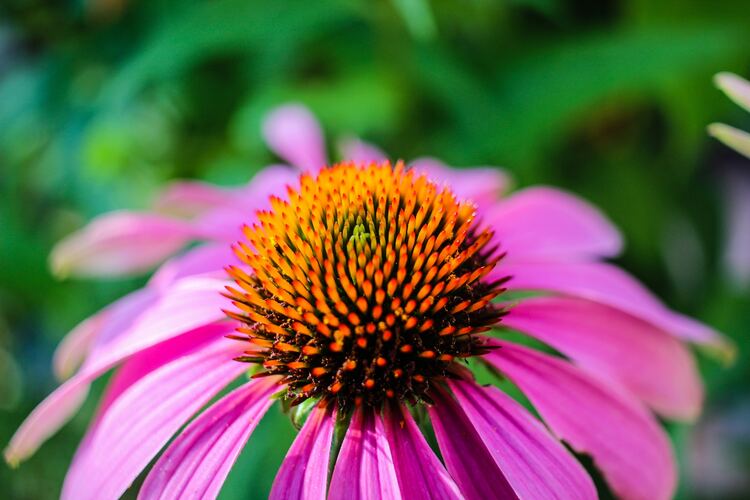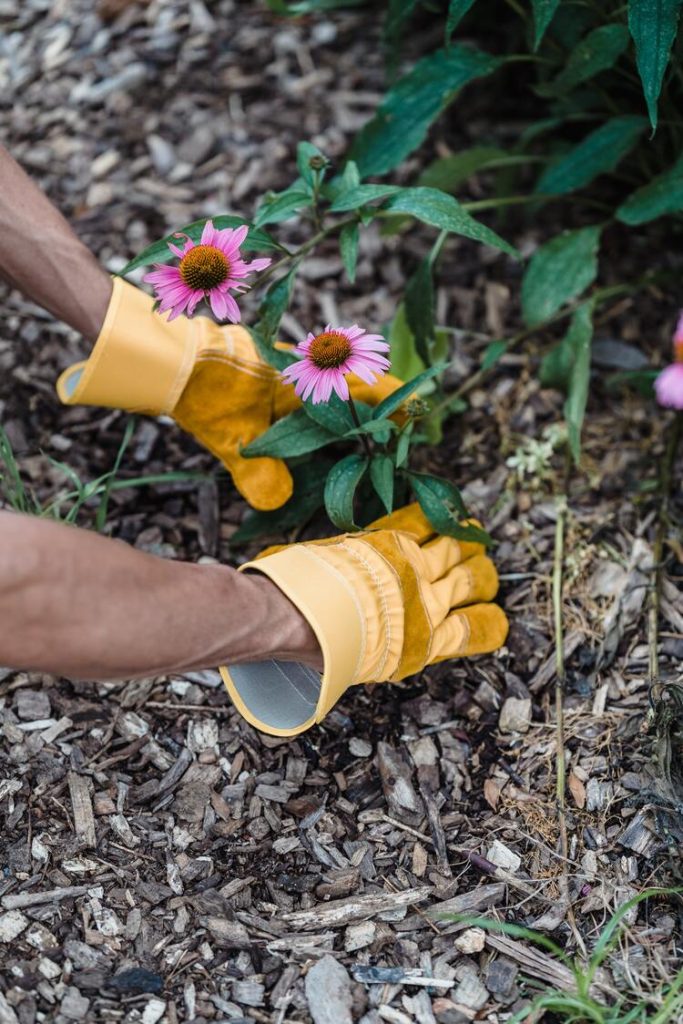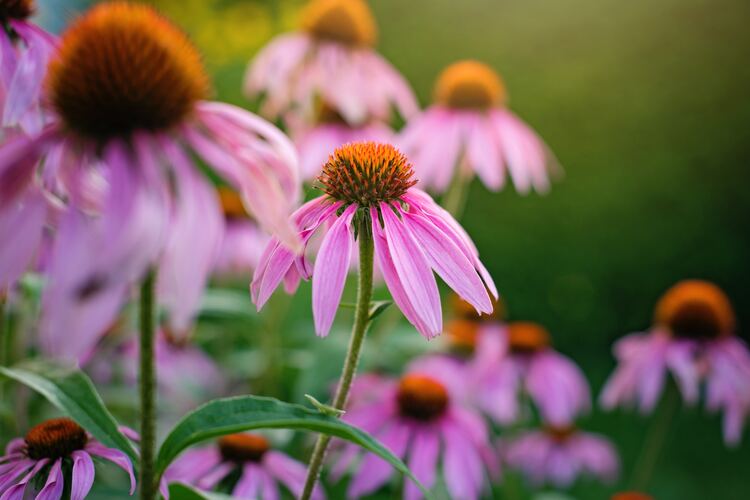This article discusses how to make echinacea tea from scratch!
Echinacea tea is primarily known for its immune-boosting properties, making it an ideal companion during cold and flu seasons. In addition to its health-promoting qualities, the tea offers a distinctive, earthy taste, which makes it an enjoyable treat on a chilly evening.
Making this tea at home is a simple process that requires just a few ingredients. You only need water, echinacea plant parts (leaves, stems, or roots), and optional additions like honey or lemon to enhance the flavor. Preparing your tea allows you to control the strength and taste, customizing it to your preferences.
In this article, we will show you how to make echinacea tea. We will share tips and techniques to ensure a perfect cup every time.
Please note: This article contains affiliate links, meaning I may earn a commission if you make a purchase by clicking a link. Of course, this comes at no extra cost to you and helps me keep offering readers solid information.

Understanding Echinacea
Echinacea stems from a group of flowering plants in the daisy family. The most commonly used species for medicinal purposes are Echinacea purpurea, Echinacea angustifolia, and Echinacea pallida. These plants, also known as purple coneflowers, are native to North America and have been used for centuries.
The word “echinacea” is derived from the Greek word “echinos,” which means “hedgehog” or “sea urchin,” and it is used in reference to the spiky or prickly cone-like central disk of the flower.
Native Americans initially recognized the healing potential of this plant and used it to treat various ailments. Today, you may find echinacea in various forms, from tablets to tea.
To make echinacea tea, you’ll be using the roots, leaves, or flowers from the echinacea plant. Each species possesses its particular characteristics, but all three are known to contain beneficial properties. Echinacea purpurea and Echinacea angustifolia are the most popular choices, with Echinacea purpurea being the easiest to find.
When selecting echinacea for your tea, ensure that you choose a high-quality product from a reputable source. This way, you can be confident you’re getting the most out of your echinacea tea experience.
Selecting the Perfect Echinacea Plant
When choosing an echinacea plant for tea, it’s essential to consider several factors.
First, ensure the plant is healthy, robust, and free from pests or diseases. A healthy plant will have vibrant green leaves, sturdy stems, and brightly colored flowers.
Remember, three echinacea species are commonly used for tea. Echinacea purpurea is the most popular and widely available due to its pleasant taste and impressive immune-boosting benefits.
Next, consider the plant parts you want to use in your tea. Each part of the echinacea plant—the roots, leaves, flowers, and stems—contains valuable nutrients and compounds. Here’s a quick overview to help you decide:
- Roots: Rich in volatile oils and inulin, a prebiotic fiber that helps support gut health. They have a stronger flavor than other plant parts, making them perfect for a more potent tea.
- Leaves: Contain flavonoids and antioxidants that help support the immune system. They offer a milder, more refreshing taste.
- Flowers: Packed with compounds, such as polysaccharides and caffeic acid derivatives, that contribute to the plant’s immune-boosting properties. They add a lovely, mild floral note to the tea.
- Stems: Usually less utilized, but they still contain beneficial compounds. They can add a bit of bitterness to the tea, making them ideal for those who prefer a more robust flavor.
Consider using more than one plant part to maximize the potential health benefits of the tea.
Harvesting and Preparation of Echinacea
Here is some advice for those growing and harvesting echinacea.
The ideal time to harvest is in the late summer or fall when the plant’s beneficial compounds are at their peak. Focus on collecting the flowers, leaves, and roots.
After harvesting, you have two options: use fresh Echinacea or dry it for a longer shelf life. If you want fresh echinacea, wash it thoroughly and chop it into small pieces.
You can use a few techniques, such as air drying or a food dehydrator. To air dry, follow these steps:
- Wash the harvested echinacea parts thoroughly.
- Spread the washed plant parts in a single layer on a clean, dry surface.
- Allow the Echinacea to dry for 7-10 days or until it is brittle to touch.
- Gently crumble the dried material to break it up into small pieces.
Once your Echinacea is dried, it’s essential to store it properly to maintain its potency and freshness. Keep the dried echinacea in an airtight container, such as a glass jar, and store it in a cool, dark place away from direct sunlight. This will help protect the plant’s properties and ensure you have a high-quality tea ingredient.
Now that your echinacea is harvested and prepared, you can make tea (see below).

How to Make Echinacea Tea
Below, we’ll walk you through a simple recipe to prepare echinacea tea.
Ingredients:
- 1 tablespoon of fresh or dried echinacea parts (1 echinacea tea bag)
- 1 cup boiling water
- Honey, ginger, lemon, mint, lemongrass, or peppermint (optional)
Instructions:
- Start by boiling 1 cup of water in a kettle or a saucepan. Ensure the water reaches a rolling boil to ensure proper extraction of the echinacea flavors and benefits.
- While the water is boiling, prepare your other ingredients. If you’d like to add some extra flavor or health benefits, consider including honey for sweetness, ginger for a warming effect, lemon for a zesty touch, or a few mint leaves for a refreshing taste.
- Place the echinacea parts or tea bag into your cup or teapot. If you’re using loose dried root, use a tea infuser or a folded tea filter for easier straining later.
- Carefully pour the boiling water over the echinacea parts or tea bags. The hot water will help to extract the flavors and beneficial compounds from the echinacea, resulting in a flavorful and aromatic tea.
- Let the tea steep for at least 5 minutes, allowing the echinacea to fully release its flavors and properties. Echinacea tea is typically brewed for 5-10 minutes, but feel free to adjust the steeping time to your taste preference.
- Once the tea has steeped, remove the tea bag or strain the loose echinacea root from the liquid. Your tea is now ready to enjoy!
Additional Ingredients for Flavor
Echinacea tea has a distinct, earthy flavor, but you should enhance the taste and create your unique blend. Here are some delightful additions that you can consider incorporating to elevate your tea experience.
Lemon: A squeeze of fresh lemon juice not only adds a zesty flavor but also complements the earthiness of Echinacea. Additionally, lemon is rich in vitamin C, which may boost your immune system.
Ginger: Grate some fresh ginger or add a pinch of ginger powder to your tea to give it a spicy, warming kick. Ginger also has well-known anti-inflammatory and digestion-improving properties, making it a perfect companion to Echinacea.
Honey: Sweeten your Echinacea tea with a teaspoon of honey, which adds natural sweetness and soothes your throat. Honey’s antibacterial properties can also benefit your overall tea-drinking experience.
Mint and Peppermint: Adding a couple of fresh mint or peppermint leaves to your tea will provide a cooling, refreshing taste. Both herbs are known to aid in digestion and can help relieve the stuffy feeling of a cold.
Lemongrass: If you’re looking for an alternate flavor profile, including a stalk of lemongrass can provide a unique, citrusy touch to your echinacea tea. Bruise the stalk and add it to your steeping tea for optimal infusion.
Consider blending echinacea with elderberry or astragalus if you want to boost the health properties of the resulting tea.

Safety and Dosage Information
Echinacea tea is generally considered safe, but taking some precautions is essential. It’s best to follow the recommended dosage to avoid potential side effects. Generally, adults can consume 1-3 cups of echinacea tea daily for short periods. Continuing this dosage beyond 8 weeks is advised by consulting a healthcare professional.
You may have an allergic reaction to the plant if you notice skin rashes, itchy eyes, or difficulty breathing after consuming echinacea tea. Stop consuming the tea immediately and consult a healthcare professional.
There are certain situations where it’s best to avoid Echinacea tea altogether. If pregnant or breastfeeding, consuming echinacea tea is not recommended.
Lastly, some people may experience mild side effects from echinacea tea, such as nausea. If these side effects become bothersome or persistent, it’s best to discontinue use and seek advice from a healthcare provider.
Buying Recommendations
If you want to purchase echinacea online, please take into consideration the following recommendations:
Frontier Organic Echinacea Purpurea Herb

Yogi Tea – Echinacea Immune Support


Pukka Organic Tea Bags, Elderberry & Echinacea Herbal Tea

Buy on Amazon now!
Storage of Echinacea Tea
Storing your echinacea tea properly is essential to maintain its freshness and properties.
Firstly, always store your Echinacea tea in an airtight container. This will prevent moisture and air from entering the container, which might otherwise cause mold and spoilage. It would be best if you also placed the container in a cool, dark place, such as a pantry or cupboard, away from direct sunlight and heat sources. This will help to preserve the tea’s efficacy and flavor.
A glass jar with a sealing lid or a food-grade plastic container with a tight seal are excellent options for storing your tea. Glass jars are often preferred as they do not absorb flavors or odors from other sources, preserving the tea’s original taste. Additionally, they have the advantage of being reusable and environmentally friendly.
When it’s time to drink your echinacea tea, always use a clean and dry spoon to scoop out the desired amount of tea leaves or powder. Avoid using a wet spoon, as it can introduce unwanted moisture to the container, potentially harming the quality of your tea.
Be mindful of the shelf life of your homemade echinacea tea. Generally, dried Echinacea leaves and flowers can be kept for up to a year, while powdered forms may last up to 6 months. To prolong the shelf life of your tea, consider adding a silica gel packet to the container, which will help to absorb excess moisture.
Frequently Asked Questions
What parts of the plant are needed?
To make echinacea tea, you can use different plant parts, including the roots, leaves, and flowers. Each part has its unique properties, offering various benefits. It’s essential to clean and prepare them properly before using them in your tea.
Is it better to use fresh or dried echinacea?
Both fresh and dried echinacea can be used to make tea. Fresh echinacea may provide more potent benefits, but dried echinacea retains most of its properties and can be stored longer. Consider your personal preference and availability when choosing between fresh or dried echinacea.
How much echinacea should be added?
The amount of echinacea used in your tea depends on personal preference and the desired strength. Generally, one to two teaspoons of dried echinacea or two to four tablespoons of fresh echinacea per cup of boiling water.
What is the ideal steeping time?
The ideal steeping time for echinacea tea is around 15 minutes. This allows for extracting the beneficial compounds from the plant without making the tea too strong or bitter. You can experiment with steeping times to find the flavor that suits your taste.
Can I add other ingredients to enhance flavor?
Yes, you can add other ingredients to echinacea tea to enhance its flavor. Popular additions include lemon, honey, mint, or ginger. These ingredients improve the taste and may provide additional health benefits.
Are there any precautions to consider when drinking it?
Echinacea tea is generally safe for consumption. However, people with allergies to plants in the daisy family should avoid echinacea, as it may cause an allergic reaction. Pregnant or breastfeeding women and individuals with autoimmune disorders should consult their healthcare professional before consuming echinacea tea, as it may have potential interactions or side effects.

I have been consuming echinacea tea since I was a kid (since it is one of my mom’s favorite teas). What about you? Have you tried this tea?
More About Herbal Tea
What Does Burdock Root Tea Taste Like?
What Does Mullein Tea Taste Like?
What Does Raspberry Leaf Tea Taste Like?
What Does Mugwort Tea Taste Like?
What Does Honeybush Tea Taste Like?